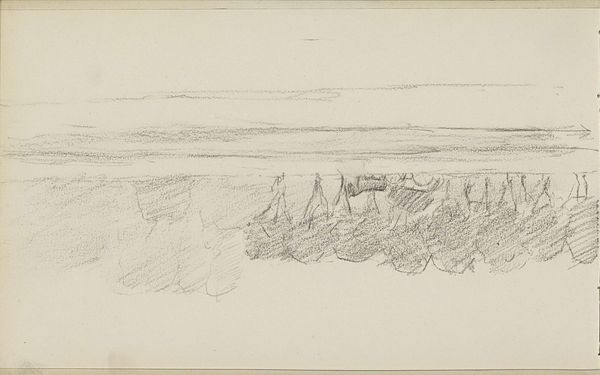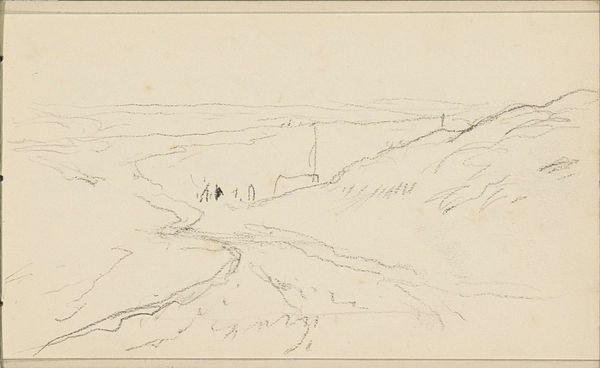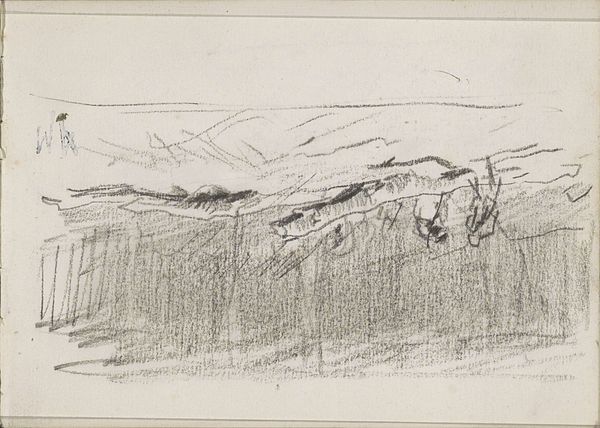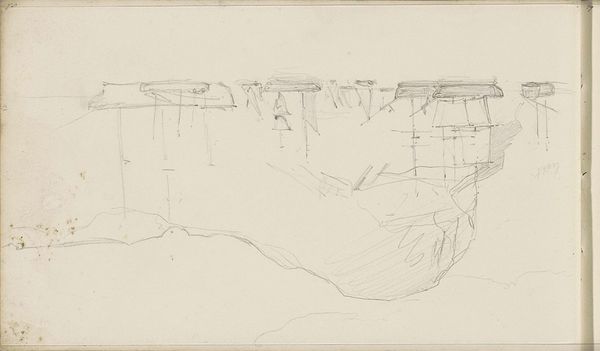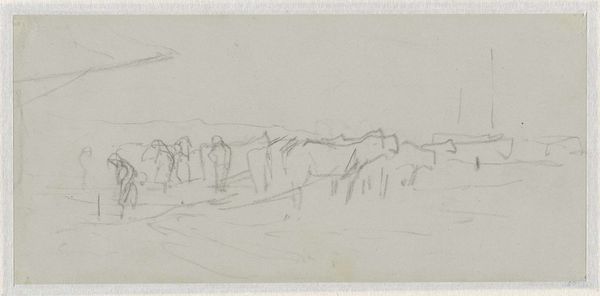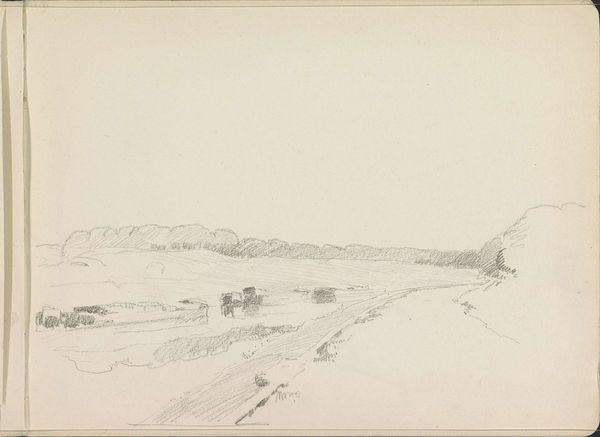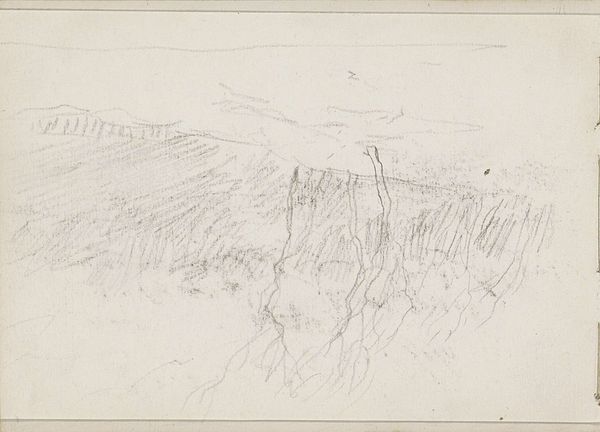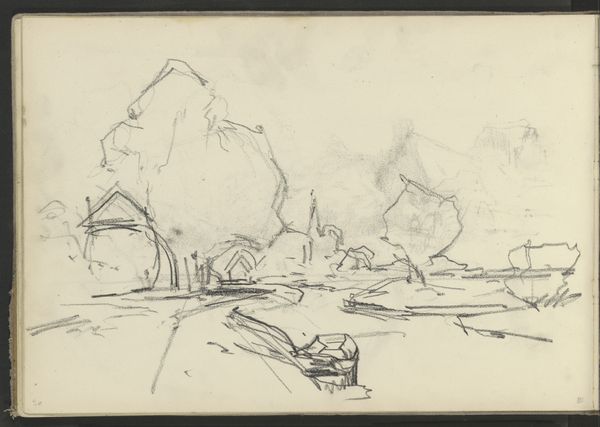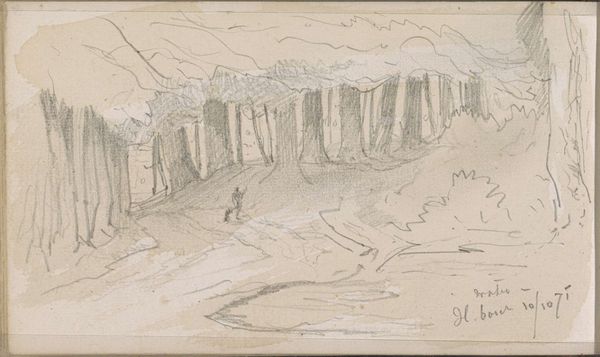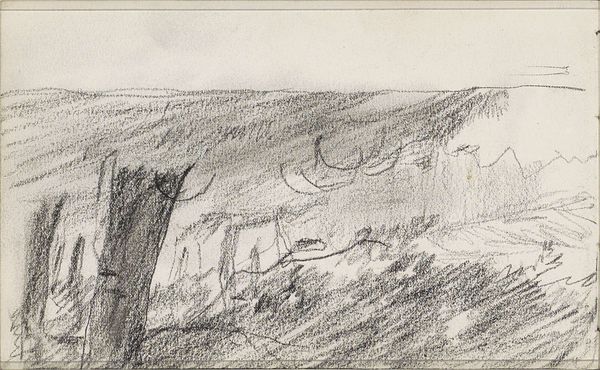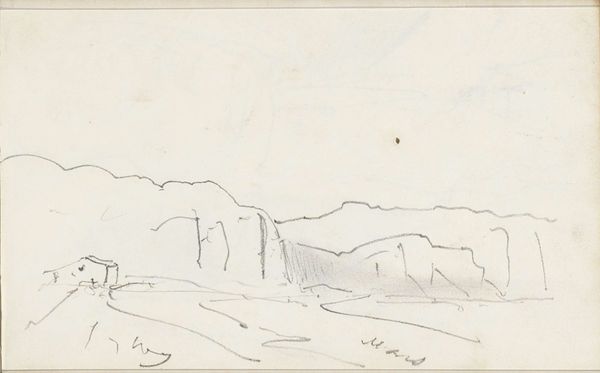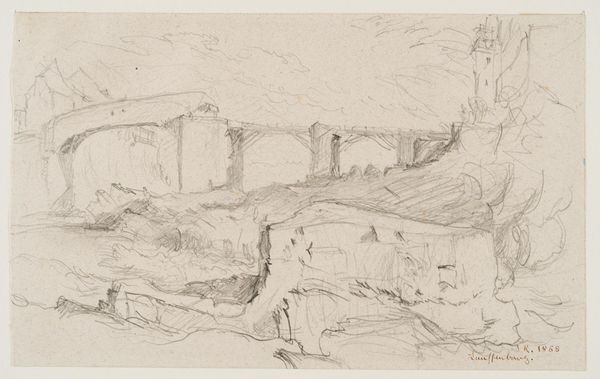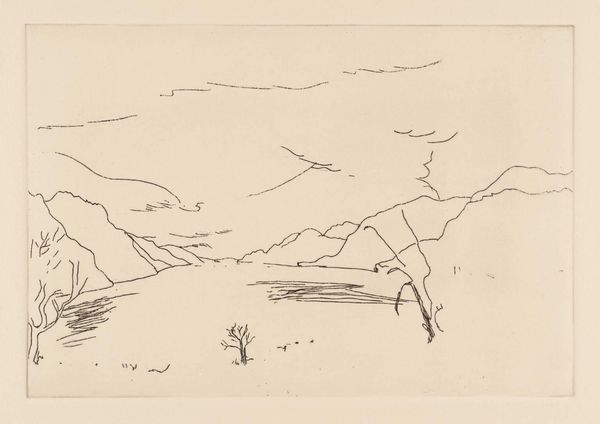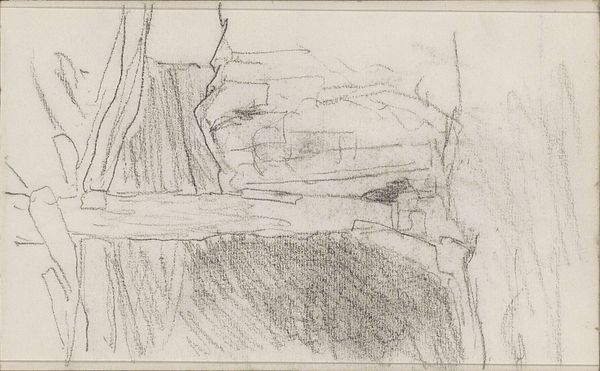
drawing, pencil
#
drawing
#
impressionism
#
pencil sketch
#
landscape
#
pencil
#
realism
Copyright: Rijks Museum: Open Domain
Curator: Jozef Israëls created this pencil drawing, titled "Cows on a Dike," sometime between 1834 and 1911. It now resides here at the Rijksmuseum. Editor: Immediately, I see a very understated scene. The thin application of the pencil gives the impression of a fleeting moment captured almost reluctantly. It's as if the artist only wanted to record the most essential details of the land. Curator: That tracks, because it’s not just about rendering what he sees, but about the atmosphere and the evocation of place. Israëls sought to capture the mood and character of rural life, particularly in the Netherlands. Cattle have a rich cultural symbolism there, right? Editor: Certainly, and this sketch hints at the role of land and agriculture in society. But look at the varying densities of pencil strokes! The texture created is not simply representational; the marks themselves articulate the feeling of earth and weather and manual labour. We should consider how available such material would have been, too; sketching was accessible. Curator: Consider those cows themselves; in folklore and even religion, they are a potent symbol of nurturing and plenty, tied intrinsically to ideas of motherhood. It’s more than a simple scene—it speaks to deep-rooted notions of land, sustenance, and tradition. The dike would be symbolic as well of humanity overcoming its watery environment, as a constant human influence on the earth to maintain social benefits from it. Editor: Yes, and the method—pencil on paper—amplifies those notions. This work comes across as a piece of working documentation, perhaps done *en plein air*, immediate and unpretentious in its construction. It prompts questions: Where was this paper sourced, who manufactured the pencils, how were they distributed and consumed, and finally how that facilitates his practice? Curator: Seeing "Cows on a Dike," one could perceive more than just a humble landscape. One might perceive an allegory, layered with ideas regarding culture and reliance on a rural ideal. Editor: Indeed. I'm reminded that we shouldn't isolate artistic skill from those humbler processes, or overlook how dependent creativity is on accessible raw materials.
Comments
No comments
Be the first to comment and join the conversation on the ultimate creative platform.
